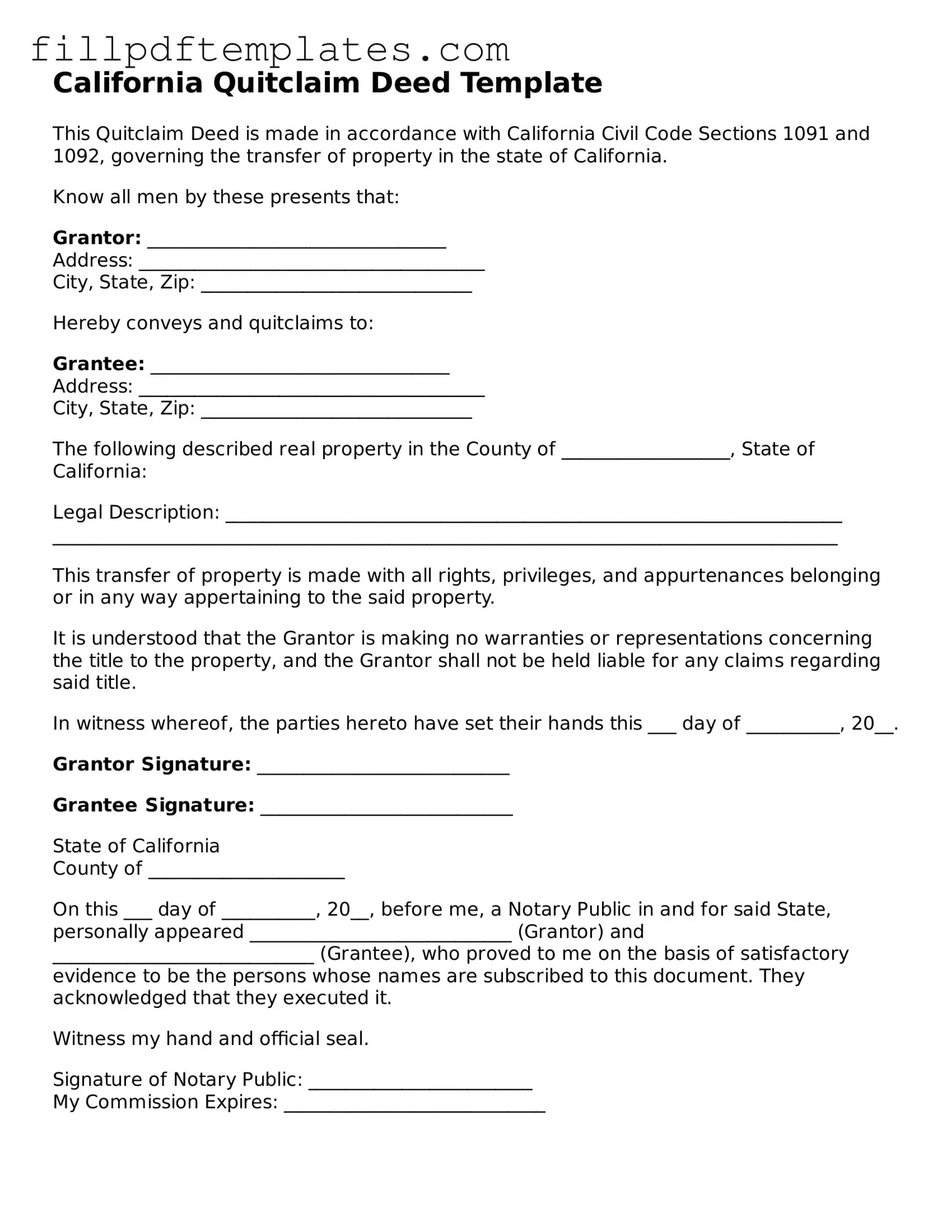California Quitclaim Deed Template
This Quitclaim Deed is made in accordance with California Civil Code Sections 1091 and 1092, governing the transfer of property in the state of California.
Know all men by these presents that:
Grantor: ________________________________
Address: _____________________________________
City, State, Zip: _____________________________
Hereby conveys and quitclaims to:
Grantee: ________________________________
Address: _____________________________________
City, State, Zip: _____________________________
The following described real property in the County of __________________, State of California:
Legal Description: __________________________________________________________________
____________________________________________________________________________________
This transfer of property is made with all rights, privileges, and appurtenances belonging or in any way appertaining to the said property.
It is understood that the Grantor is making no warranties or representations concerning the title to the property, and the Grantor shall not be held liable for any claims regarding said title.
In witness whereof, the parties hereto have set their hands this ___ day of __________, 20__.
Grantor Signature: ___________________________
Grantee Signature: ___________________________
State of California
County of _____________________
On this ___ day of __________, 20__, before me, a Notary Public in and for said State, personally appeared ____________________________ (Grantor) and ____________________________ (Grantee), who proved to me on the basis of satisfactory evidence to be the persons whose names are subscribed to this document. They acknowledged that they executed it.
Witness my hand and official seal.
Signature of Notary Public: ________________________
My Commission Expires: ____________________________
